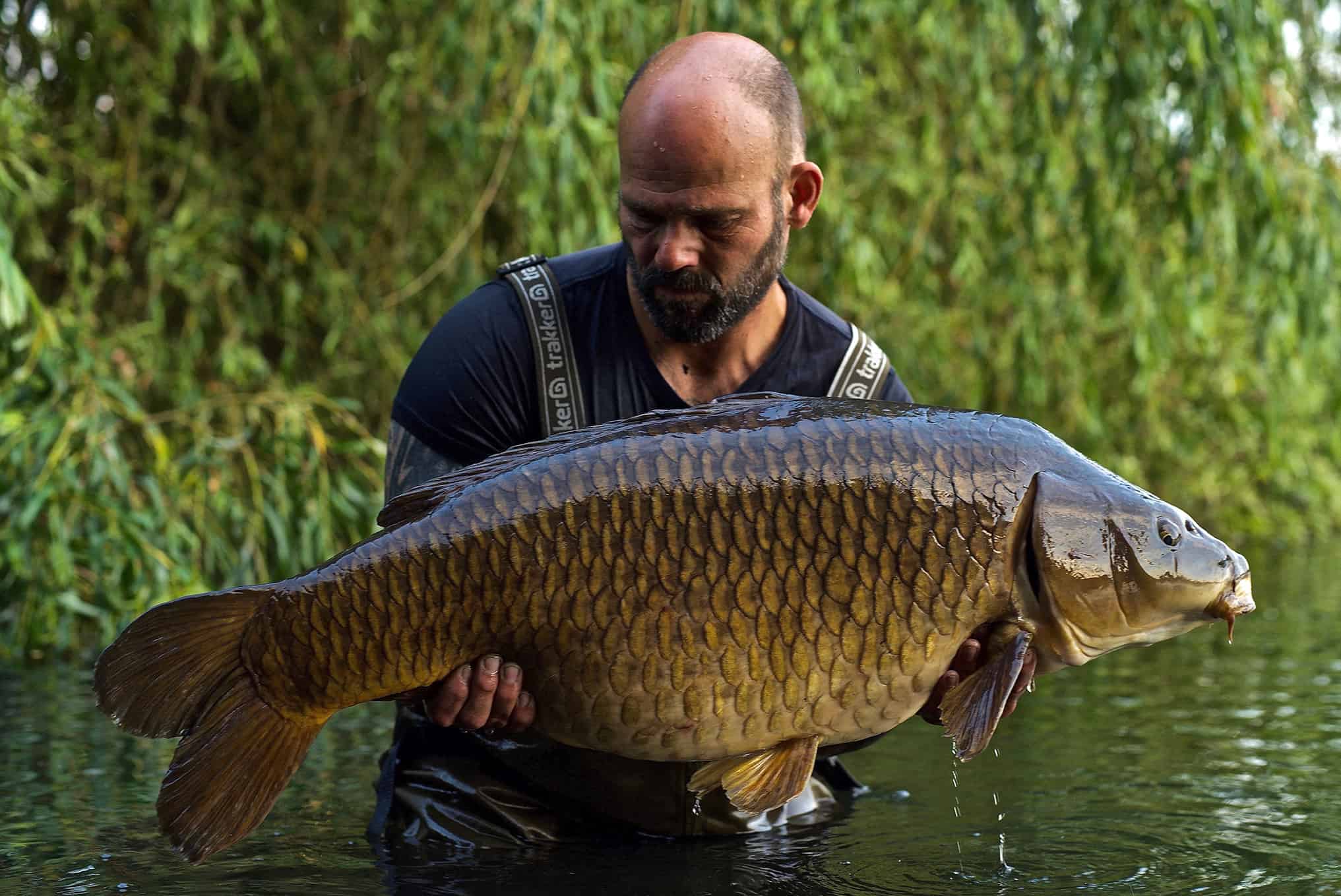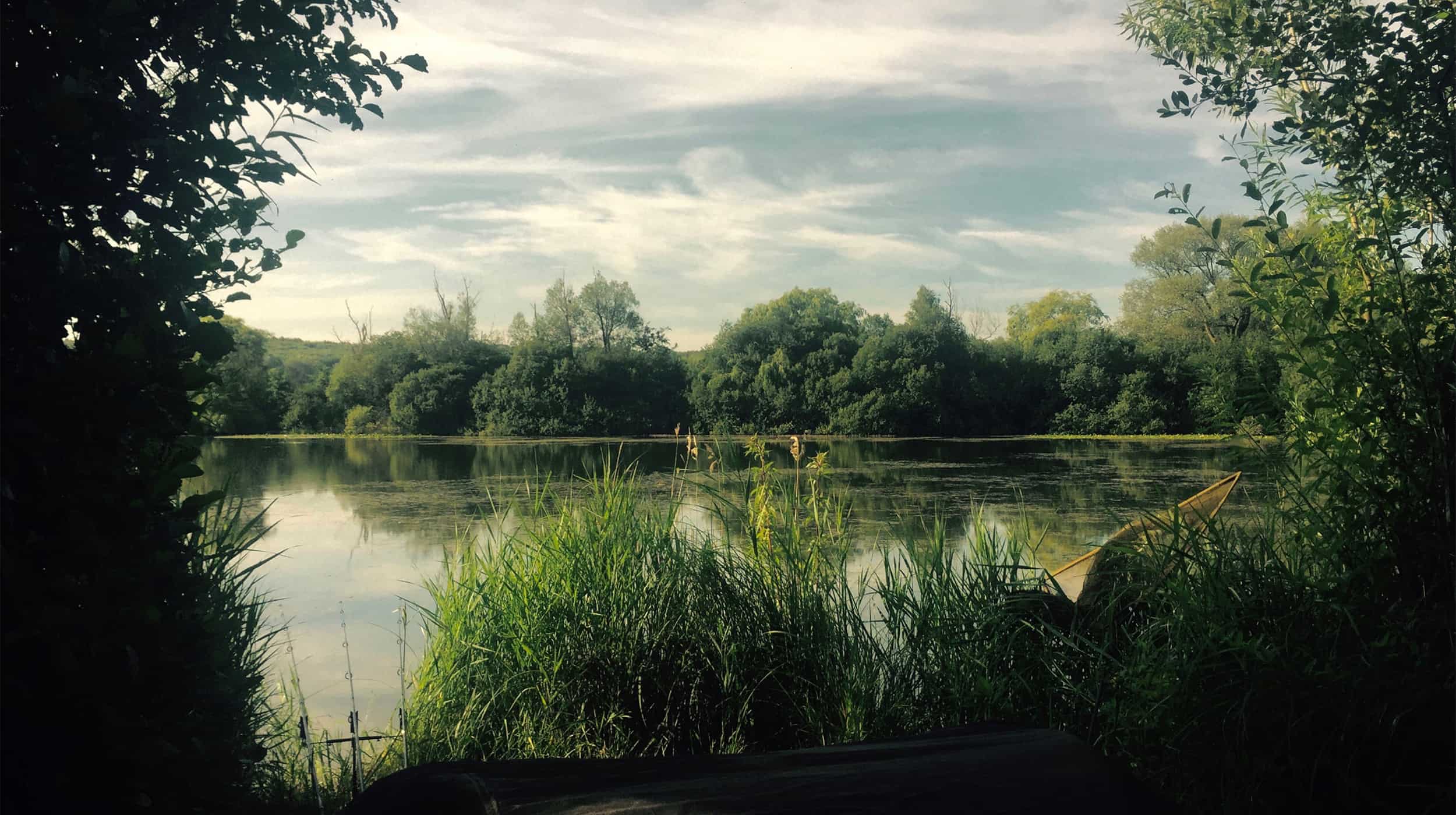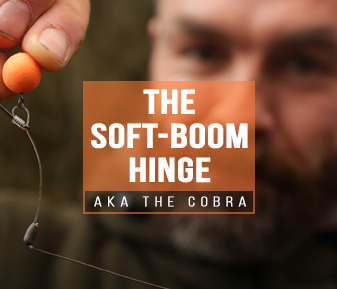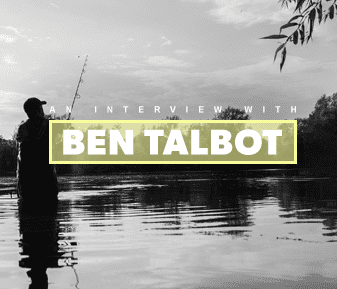Gaz Fareham explains why the Soft Boom Hinge aka 'The Cobra' is his go to rig - sharing his vast knowledge on the most effective set up to catch bites.
We ask Oz Holness - With the vast majority of lakes now having already closed for spawning, the season of cold lager, barbecued meats and hungry carp is upon us. With this in mind, how do you approach your angling throughout the warmer months and how does it differ from other seasons?
My first memories of carp angling stem way back during an era when the old close season was in force, rivers and still waters shut to angling between mid-March and mid-June. The carp angling year always started on June 16th and so my earliest carp angling memories are staunch summer ones, those hot and sultry summer months epitomized everything carpy! The summer solstice and the longest day… up at 4am with bleary eyes searching for signs over a flat calm lake. Coils of mist rising up through the cool morning air and patches of frothy bubbles erupting around the vast weed beds. Since the abolition of that old close season, it soon became apparent that the spring months were the really ‘hot’ times (excuse the pun) and over the years, a pattern emerged of distinctly differing styles of angling suiting the drift of time from Spring into Summer. Natural events and weather play a big part in adjusting the angling to suit the habits of the carp and keeping the flow going.
Spring was all about living in the moment, being ultra-mobile and keeping up with the constant changing needs of the fish as the weather fluctuates in an instant. The natural world wakes up after winter and things happen rapidly as the sun warms the water, with changes happening on almost a daily basis. If you spend a lot of time outdoors you notice these changes and react and adapt accordingly. The wildlife is always one step ahead of us of course and spring is the busiest season for us as anglers trying to keep abreast of it all! From my experience, summer is far more relaxed and laid back (as it should be) particularly when it comes to location and feeding scenarios.
Once the carp have gone through their spawning ritual and settled back into the general groove of life there will be two things important to them for the following months and that will be weed and food! I will therefore be prepared for this, and moving into the months of July, August and September I have a fairly clear idea of my approach for most scenarios or campaigns I may be into at any time.
First, I will be looking at the weediest areas of the pit and watching for signs the carp are in residence. For reasons of comfort, safety, food sources or whatever, in my experience the carp throughout the summer are more often than not found in the thickest, largest weed beds they can find! I will then watch closely at first light and locate the favored areas for feeding. Once I’m happy with location the hard work truly begins. First, extensive leading of the area is required to assess the extent of the weed… surface weed is no gauge of just how much lay unseen beneath the water, and there is no point fishing to spots there will be no chance of landing carp from.
Once a likely spot is located and I’m happy, I will rake and nip away channels for my lines to sit through as well as they can, and important job and one that will benefit you as summer progresses. This job is done with a big rake on a long rope and then subsequently, a small castable sea lead with little prongs. With the preliminary work done, the baiting can begin, and I will have worked hard in June prepping up big quantities of seed, nuts and pulses with this period in mind. I generally tend to use seed first to get the spot turning over and gradually add the larger items over the coming weeks. By the height of Summer I will have the nuts and small boilies added at around 50/50 with the seed. With the addition of plenty of liquid to the mix it seems to keep the carp busy most mornings and there are enough large items now to keep the bites coming and stop them becoming pre-occupied on the seed.
The ability to keep the bait going in and knowing the fish are usually in residence ready for a morning feed-up is perfect for this time of year. A spot located, ready and primed with all the work being done before you arrive and then it’s just a case of casting out to the clips with a little top up of bait. Time to get the BBQ on crack open a cold beer and sit back and watch the sun set in the knowledge that first light should see some action over the zone! Magic!

"the carp throughout the summer are more often than not found in the thickest, largest weed beds they can find!"
"the carp throughout the summer are more often than not found in the thickest, largest weed beds they can find!"
So that’s best-case scenario, on the quieter waters where you can actually do some work and angle without too much interference, pretty rare these days! A classic example of this style of fishing was my first summer on the Sailing club pit where a huge area of dense weed bloomed up in the center of the lake covering an area of probably 15 or so acres. Those carp pretty much lived in and around it from July through August and after finding a presentable spot on the southern-most tip of the area. I had them visiting most mornings for a 6-week period and during that time it produced 9 bites before the area died a bit of a death in September, once the weed sank those fish started to frequent other areas, harvesting for the autumn.
A point of note when fishing bigger waters of let’s say over ten acres in summer is that when the weed does come it can be a real case of rolling up your sleeves and getting to work! The wind will quite often break up the weed beds into huge weed-bergs and once it starts drifting about, all manner of carnage ensues. I’ve built weed rakes out of old sticks to try and protect my lines and often resort to big captive back leads to overcome issues so a rake and rope is always at hand. Of course, on the bigger pits, fishing as close in as possible is a help and actually that is true of all weed scenarios. The closer to the bank the better for obvious reasons unless you have the use of a boat.
On the busier waters, I will still strive to angle around those big weed-beds and although pre-baiting is out of the question the main work of location is much simpler and I have tended to find the fish will use these areas for weeks if not months despite angling pressure. I still tend to favor the heavier baiting approach depending on stock levels etc and will very often put a bucket of my summer mix on a spot,
especially if its big enough to squeeze a couple of rods onto. When the carp are really ‘on it’ in summer you can get through a lot of bait real quick so it’s always worth keeping some pellet/corn/shelf-life boilie in the motor for those occasions when they wipe you out and a red letter trip is on the cards!
Tackle wise, I use pretty much the same as ever but tend to stick firmly to the size 4 hooks and uprated hooklinks, 35lb versions instead of the 25lb for instance. I will use a braided mainline wherever possible and either a lead clip or drop off Heli as losing the lead is a huge bonus in upping the chances of landing weeded fish. I also love fishing under the stars in the summer months but if the insects are bad then a mossie mesh is a summer essential I would never be without!
Summer fishing really is often about those first few hours of daylight for the bites with prep work done on the spots the evening before your trip or days leading up to a session. This all makes life so much simpler and more conducive to a relaxed vibe to the trip, often a bit more camping style for me in the summer than hardcore hunting. Much different to the relentless searching and moving around during the spring months. I look forward all year to a cold beer at sundown and those warm mornings when you can swing your legs out of the bag and sit enjoying the first tea of the morning without the hoody on!
So that’s best-case scenario, on the quieter waters where you can actually do some work and angle without too much interference, pretty rare these days! A classic example of this style of fishing was my first summer on the Sailing club pit where a huge area of dense weed bloomed up in the center of the lake covering an area of probably 15 or so acres. Those carp pretty much lived in and around it from July through August and after finding a presentable spot on the southern-most tip of the area. I had them visiting most mornings for a 6-week period and during that time it produced 9 bites before the area died a bit of a death in September, once the weed sank those fish started to frequent other areas, harvesting for the autumn.
A point of note when fishing bigger waters of let’s say over ten acres in summer is that when the weed does come it can be a real case of rolling up your sleeves and getting to work! The wind will quite often break up the weed beds into huge weed-bergs and once it starts drifting about, all manner of carnage ensues. I’ve built weed rakes out of old sticks to try and protect my lines and often resort to big captive back leads to overcome issues so a rake and rope is always at hand. Of course, on the bigger pits, fishing as close in as possible is a help and actually that is true of all weed scenarios. The closer to the bank the better for obvious reasons unless you have the use of a boat.
On the busier waters, I will still strive to angle around those big weed-beds and although pre-baiting is out of the question the main work of location is much simpler and I have tended to find the fish will use these areas for weeks if not months despite angling pressure. I still tend to favor the heavier baiting approach depending on stock levels etc and will very often put a bucket of my summer mix on a spot, especially if its big enough to squeeze a couple of rods onto. When the carp are really ‘on it’ in summer you can get through a lot of bait real quick so it’s always worth keeping some pellet/corn/shelf-life boilie in the motor for those occasions when they wipe you out and a red letter trip is on the cards!
Tackle wise, I use pretty much the same as ever but tend to stick firmly to the size 4 hooks and uprated hooklinks, 35lb versions instead of the 25lb for instance. I will use a braided mainline wherever possible and either a lead clip or drop off Heli as losing the lead is a huge bonus in upping the chances of landing weeded fish. I also love fishing under the stars in the summer months but if the insects are bad then a mossie mesh is a summer essential I would never be without!
Summer fishing really is often about those first few hours of daylight for the bites with prep work done on the spots the evening before your trip or days leading up to a session. This all makes life so much simpler and more conducive to a relaxed vibe to the trip, often a bit more camping style for me in the summer than hardcore hunting. Much different to the relentless searching and moving around during the spring months. I look forward all year to a cold beer at sundown and those warm mornings when you can swing your legs out of the bag and sit enjoying the first tea of the morning without the hoody on!







